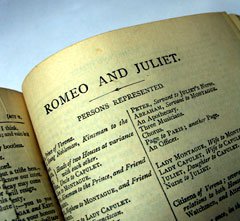The Key to Good Conduct: Get a New Curriculum
As a longtime educator and a classroom English teacher for twenty-seven years, I've seen all kinds of student "bad behavior." Most of my classroom experience focused on teaching so-called at-risk youth. I chose teaching to make a difference, and, to me, teaching at-risk youth was where I could make the most dramatic difference.

I struggled for seventeen years and never created the classroom I envisioned that changed the lives of students. Of course, I had my successes and helped students, but not always to the degree that I wanted. Many at-risk youth have poor reading and writing skills, and I taught the very subject they disliked the most. The biggest challenge for me in teaching English was to make the subject matter interesting to the students; my biggest success was a unit that linked poetry to current popular music. It wasn't until later that I realized this was relevant to students.
In 1986, I interviewed for a teaching position in a brand-new program: the California Partnership Career Academies, as an English teacher at Bakersfield's Health Careers Academy. I thought that combining English concepts into science and the medical field and team teaching with a science teacher would be exciting challenges. I lobbied hard for the job and was hired, and it wasn't until much later that I discovered I had been the only applicant.
I will not sugar-coat my first year. It was the most difficult one in my entire career. To my dismay, most of the students were reading at a third-grade level; I had a lot to learn about science and medicine, and most of my students were gang members. The good news was that in the second year of the academy, the local health community became our partners and helped me create relevant lessons around medical concepts.
Medicine has very rigorous reading and writing requirements, and, to my surprise, my students willingly struggled to read the material and write about medical concepts. For the first time, discipline problems in my classroom decreased. Subject matter I had previously taught by threatening and cajoling students was now considered interesting.

For example, when I taught Romeo and Juliet, a poison-control center in Fresno, California, sent a team to my school to instruct on various poisons and their antidotes. Students asked difficult questions involving chemistry and biology. Most importantly, they liked the play's story. These activities led the Health Careers Academy to adopt project-based learning that involves English, history, science, and math. These projects also spilled over into student job-shadowing and internships opportunities and linked the classroom to real life.
The long and detailed description appearing above can be summed up in two words: engaging curriculum. Curriculum students perceive as relevant decreases bad behavior; students on task are not disturbing the classroom. More importantly, they can be encouraged to participate in more rigorous learning activities. I encourage teachers to bring relevancy into their curriculum. If you have trouble finding relevant curriculum for project-based learning, go to the Web site of the Ford Partnership for Advanced Studies and read about its curriculum, which is both integrated and project based. It is also free and can be downloaded from the site.